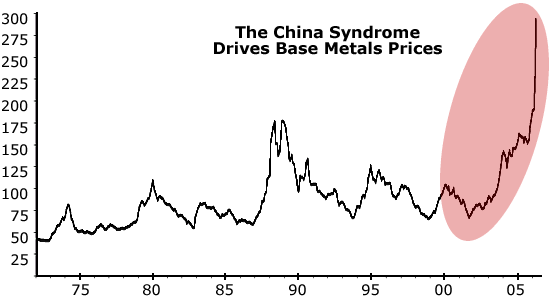| Home | About Us | Resources | Archive | Free Reports | Market Window |
Trading Scrip Under The Buttonwood TreeBy
Saturday, May 13, 2006
I found a hot company with the most interesting story. It went public on July 4th at $25 per share. On its first day of trading, it jumped to $40, then $50. A month later, on August 10th, it was trading at $280 and on August 11th, it peaked at $310. The next day it fell to $212 and by the 15th it was down to $172, ending the year at $150. Amazon.com? Internet Capital Group? Yahoo!? Guess again. The year was 1791. The stock was the Bank of the United States, set up by Alexander Hamilton in 1790 to help restructure the new government’s $80 million of debt from the Revolutionary War and General Washington’s bar tab. And you just won’t believe it, but this hot IPO somehow ended up in the hands of 30 members of Congress, the Secretary of War and wealthy citizens. Some things never change. The Bank of the United States was signed into law in February of 1791. To set the tone for enduring government bureaucracy, it took five more months for the Bank to prepare for its initial public offering. It wasn’t so much a stock that was sold, as a subscription or scrip for ownership. According to the Museum of American Financial History, you paid $25 and had to put up another $375 by July of 1793, but you owned a piece of the Bank of the United States. This scrip traded on the streets of Philadelphia, which was then the nation’s capital, right next to the cheese steaks stands. But these scrips soon began trading in New York, where the real money resided, with paper and pricing news traveling back and forth by stagecoach. What Hamilton saw was the need for a liquid market for government debt, so that later on, he could raise even more debt. He modeled the Bank of the United States after the Bank of England, which was able to borrow long-term debt and finance a navy to whip the French. No one wanted to own a high risk, illiquid IOU from a brand new government of the United States. Investors were more willing to take the risk if they knew they could sell the scrip at some point. Of course some idiot top ticked it at $310, just like some idiot in 2000 would top tick the NASDAQ at 5000. With risk and liquidity comes volatility. Trading scrip on the muddy streets of New York was no way to go through life. So on May 17, 1792, 24 brokers and merchants met under a buttonwood tree, which has since been replaced by a building at 68 Wall Street. Voila! They formed the first organized stock exchange in New York. They were hungry for action and someone had to move those bonds and scrip around. A stock exchange could not be much larger than someone’s voice could carry, so they eventually moved indoors to a rented room on Wall Street. This group became the New York Stock & Exchange Board, and all sorts of bonds and other bank stocks began to change hands there. Alexander Hamilton got his liquidity and eventually so did every other venture that needed capital to grow. Good Investing, Andy Kessler Editor’s Note: Andy Kessler is a former Wall Street analyst and hedge fund manager. He has written three books on investing, Wall Street Meat, Running Money and How We Got Here and is a frequent contributor to the Wall Street Journal, Forbes and other financial publications. He lives with his wife and four sons in the Bay Area. Market NotesTHE CHINA SYNDROME IN CHART FORM Take the rise of Chinese metal consumption, add rank financial speculation, and you have one incredible Chart of the Week… China builds the equivalent of one Houston, Texas each month to accommodate the rush of rural Chinese into urban areas. This enormous infrastructure creation is causing the price of base metals like aluminum, copper, and nickel to explode. Our chart shows this explosion. It’s the past 35 years of the ABN AMRO Base Metals Price Index. From its low in October 2001, this index has risen 340%. A price melt-up indeed…
-Brian Hunt |
Recent Articles
|


